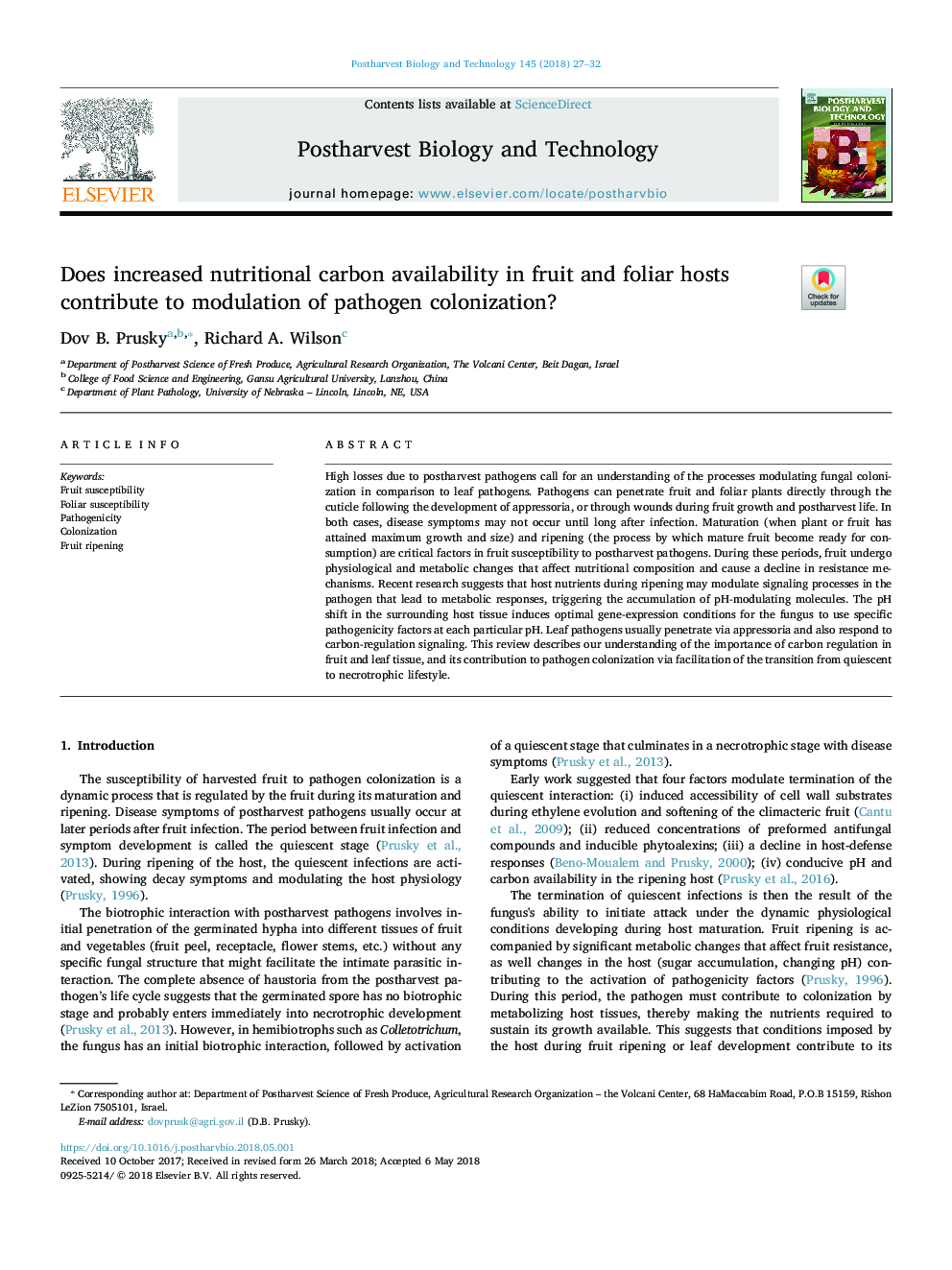| کد مقاله | کد نشریه | سال انتشار | مقاله انگلیسی | نسخه تمام متن |
|---|---|---|---|---|
| 8881765 | 1624949 | 2018 | 6 صفحه PDF | دانلود رایگان |
عنوان انگلیسی مقاله ISI
Does increased nutritional carbon availability in fruit and foliar hosts contribute to modulation of pathogen colonization?
ترجمه فارسی عنوان
آیا افزایش کربن مواد مغذی در میزبان میوه ها و برگها موجب تعدیل شدن کلونیزاسیون پاتوژن می
دانلود مقاله + سفارش ترجمه
دانلود مقاله ISI انگلیسی
رایگان برای ایرانیان
کلمات کلیدی
حساسیت به میوه، حساسیت برگ پاتوژنز کلونیزاسیون، رسیدن میوه،
موضوعات مرتبط
علوم زیستی و بیوفناوری
علوم کشاورزی و بیولوژیک
علوم زراعت و اصلاح نباتات
چکیده انگلیسی
High losses due to postharvest pathogens call for an understanding of the processes modulating fungal colonization in comparison to leaf pathogens. Pathogens can penetrate fruit and foliar plants directly through the cuticle following the development of appressoria, or through wounds during fruit growth and postharvest life. In both cases, disease symptoms may not occur until long after infection. Maturation (when plant or fruit has attained maximum growth and size) and ripening (the process by which mature fruit become ready for consumption) are critical factors in fruit susceptibility to postharvest pathogens. During these periods, fruit undergo physiological and metabolic changes that affect nutritional composition and cause a decline in resistance mechanisms. Recent research suggests that host nutrients during ripening may modulate signaling processes in the pathogen that lead to metabolic responses, triggering the accumulation of pH-modulating molecules. The pH shift in the surrounding host tissue induces optimal gene-expression conditions for the fungus to use specific pathogenicity factors at each particular pH. Leaf pathogens usually penetrate via appressoria and also respond to carbon-regulation signaling. This review describes our understanding of the importance of carbon regulation in fruit and leaf tissue, and its contribution to pathogen colonization via facilitation of the transition from quiescent to necrotrophic lifestyle.
ناشر
Database: Elsevier - ScienceDirect (ساینس دایرکت)
Journal: Postharvest Biology and Technology - Volume 145, November 2018, Pages 27-32
Journal: Postharvest Biology and Technology - Volume 145, November 2018, Pages 27-32
نویسندگان
Dov B. Prusky, Richard A. Wilson,
